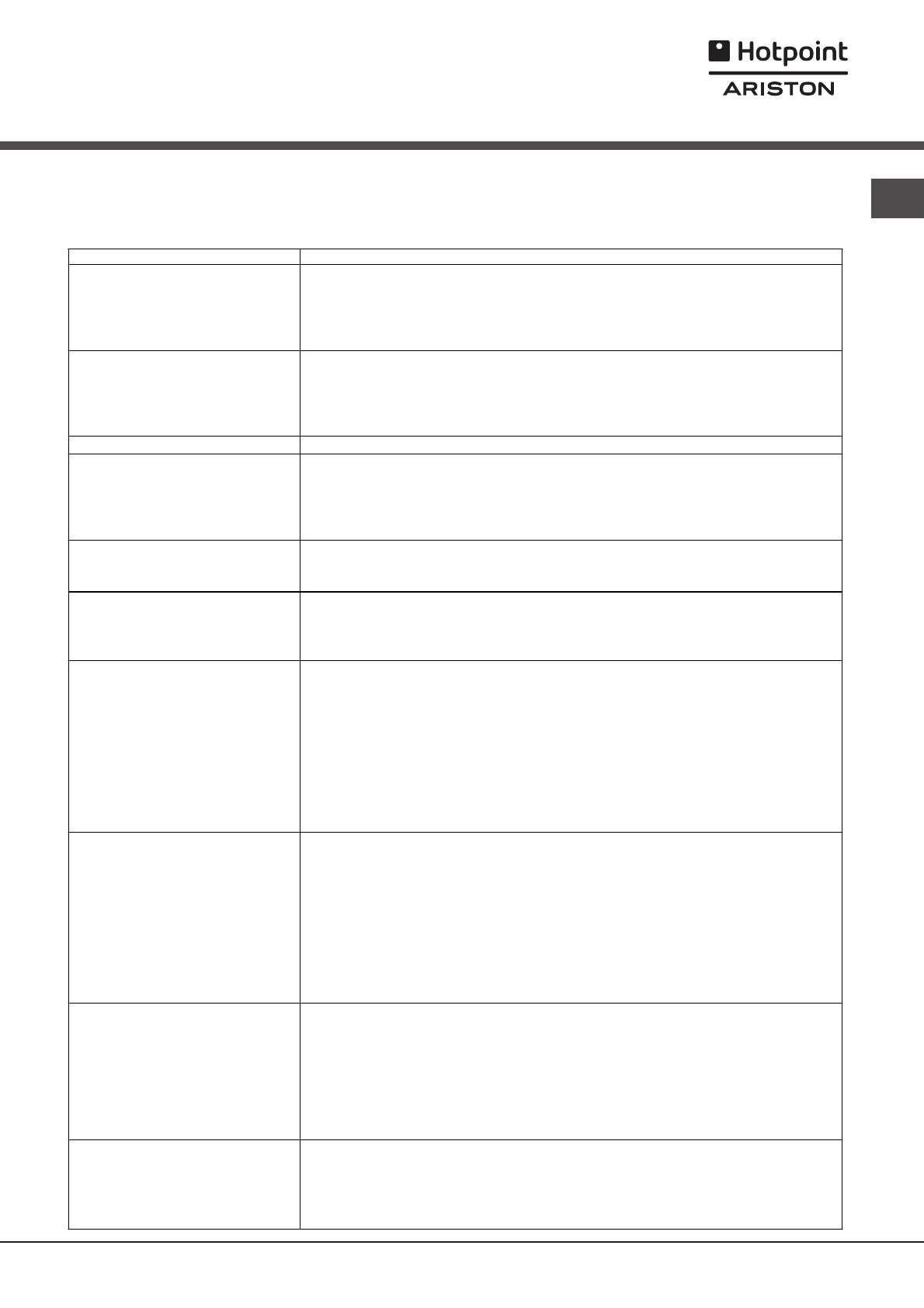
EN
Only use products which have been
specifically designed for dishwashers.
Do not use table salt or industrial salt, or
washing up liquid.
Follow the instructions given on the packaging.
If using a multi-functional product it is not necessary to
add rinse aid; however, we recommend that you add salt,
especially if you live in an area where the water is hard or
very hard. Follow the instructions given on the packaging.
If you do not add salt or rinse aid, the LOW
SALT
* and LOW RINSE AID* indicator lights will
flash continuously.
Loading the rinse aid
Rinse aid makes it easier for the crockery to dry, as water
runs off surfaces more readily and therefore does not leave
streaks or marks.
The rinse aid dispenser should be filled:
whenever the indicator light (H) signals that it is empty.
Illuminated light: add rinse aid; unlit light: there is no
shortage of rinse aid in the dispenser.
when the LOW RINSE AID
* indicator light on the panel
flashes;
1. Open the dispenser by turning
the lid (G) in an anticlockwise
direction.
2. Pour in the rinse aid, making sure it
does not overflow from the dispenser. If
this happens, clean the spill immediately
with a dry cloth.
3. Screw the lid back on.
NEVER pour the rinse aid directly into the appliance tub.
Adjusting the amount of rinse aid
If you are not completely satisfied with the washing or drying
results, you may adjust the quantity of rinse aid used. Use a
screwdriver to turn the dosage adjuster to one of the 6 pre-set
positions (the default position is set to 4):
if there are bluish streaks on the crockery, set the adjuster
to a lower number (1-3).
if drops of water remain on the crockery or there are
limescale marks present after the cycle has finished, set the
adjuster to a higher number (4-6).
If you are using multi-functional tablets and you wish to
further improve the drying performance of the appliance, fill
the dispenser and set the dosage adjuster to 2.
Loading the refined salt
Every dishwasher is equipped with a water softener which, by
using refined salt designed especially for this type of
appliance, supplies water without limescale which is then used
to wash the crockery.
This dishwasher offers a setting which helps to reduce
pollution and optimises washing performance in accordance
with the water hardness level in your area. This information can
be obtained from the organisation which supplies your
household with water.
In order to obtain the best possible results from a wash cycle,
make sure that the dispenser is never empty. Refined salt
removes limescale from the water, thus avoiding the formation
of deposits on crockery. The salt dispenser is located in the
lower part of the dishwasher (see Description) and should be
filled:
when the green float
* cannot be seen by simply looking at
the cap of the salt dispenser;
when the LOW SALT
* indicator light on the panel flashes;
if your machine is not equipped with an indicator light or a
green float:
approximately every 30 wash cycles;
1. Remove the lower rack and unscrew
the cap of the dispenser (in an anti-
clockwise direction).
2. For the first wash cycle only: fill the
dispenser up to the edges with water.
3. Position the funnel
* provided correctly
(see figure) and fill the salt dispenser up
to the edges (approximately 2 kg); it is normal for a little water
to leak out.
4. Remove the funnel*, wipe away any salt residue from the
thread and screw the cap on tightly, so that detergent does
not leak into the dispenser during the wash cycle (this could
damage the water softening system beyond repair).
When necessary, measure out the salt before a wash
cycle so that any saline solution which has leaked out of the
salt dispenser is removed.
Adjusting the amount of salt*
It is possible to adjust the amount of salt used according to the
hardness of the water in your area (this information is available
from your local water board).
1. Unscrew the dispenser cap.
2. Turn the arrow on the neck of the
dispenser (see figure) towards the + or -
symbols, using the table below as a
guide.
(°dH = hardness measured in German degrees - °f =
hardness measured in French degrees - mmol/l = millimoles
per litre)
The default setting of the water softening system is +.
- If using multi-functional tablets fill the salt dispenser and set the
adjuster to -; if the hardness of the water is greater than 60°fH,
set it to +.
* Only available in selected models.
Rinse aid and refined salt
Hardness of the water
°dH °fH °mmol/l
Selector
knob
position
Salt
consumption
(grams/cycle)
Autonomy
(cycles/2 kg)
0 - 10 0 - 17 0 - 1.7 / 0 /
10 – 25
18 – 44
1.8 – 4.4
- 20 60
25 – 50
45 – 89
4.5 – 8.9
MED 40 40
> 50 > 89 > 8.9 + 60 25












